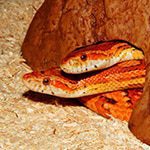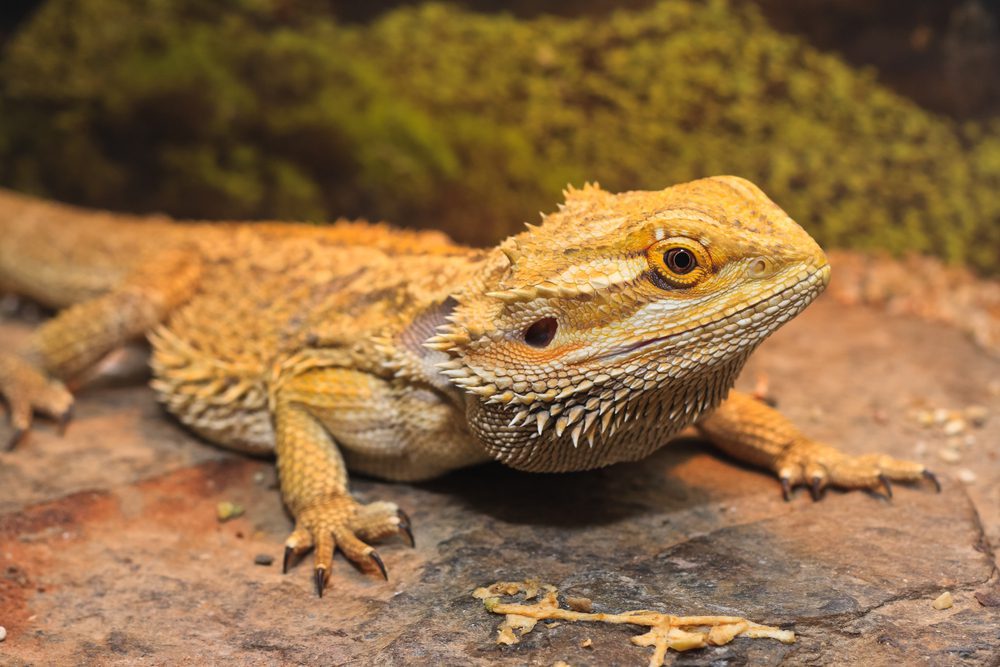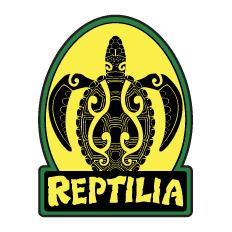
Corn Snake
Common Name: Corn Snake
Scientific Name: Pantherophis guttatus
Type: Non-venomous constrictor
Diet: Carnivore
Average Life Span: Up to 20 years
Size: 2 – 5 feet
Weight: 900 grams average

About Corn Snakes
The corn snake (Pantherophis guttatus) is a North American species of rat snake that subdues its small prey by constriction. It is found throughout the southeastern and central United States. Their docile nature, reluctance to bite, moderate adult size, attractive pattern, and comparatively simple care make them commonly kept pet snakes. Though superficially resembling the venomous copperhead and often killed as a result of this mistaken identity, corn snakes are harmless and beneficial to humans. Corn snakes lack functional venom and help control populations of wild rodent pests that damage crops and spread disease.
The corn snake is named for the species’ regular presence near grain stores, where it preys on mice and rats that eat harvested corn. Some sources maintain that the corn snake is so-named because the distinctive, nearly-checkered pattern of the snake’s belly scales resembles the kernels of variegated corn. Regardless of the name’s origin, the corn reference can be a useful mnemonic for identifying corn snakes.
Size and Behaviour
Adult corn snakes have a body length of 61–182 cm (2.00–5.97 ft). In the wild, they usually live around six to eight years, but in captivity can live to an age of 23 years or more. The record for the oldest corn snake in captivity was 32 years and 3 months. They can be distinguished from copperheads by their brighter colors, slender build, round pupils, and lack of heat-sensing pits.
Diet & Nutrition
Like all snakes, corn snakes are carnivorous and in the wild, they eat every few days. While most corn snakes eat small rodents, such as the white-footed mouse, they may also eat other reptiles or amphibians, or climb trees to find unguarded bird eggs. Behavioral/chemosensory studies with corn snakes suggest that odor cues are of primary importance for prey detection, whereas visual cues are of secondary importance. Like many species of the Colubridae, corn snakes exhibit defensive tail vibration behavior.










